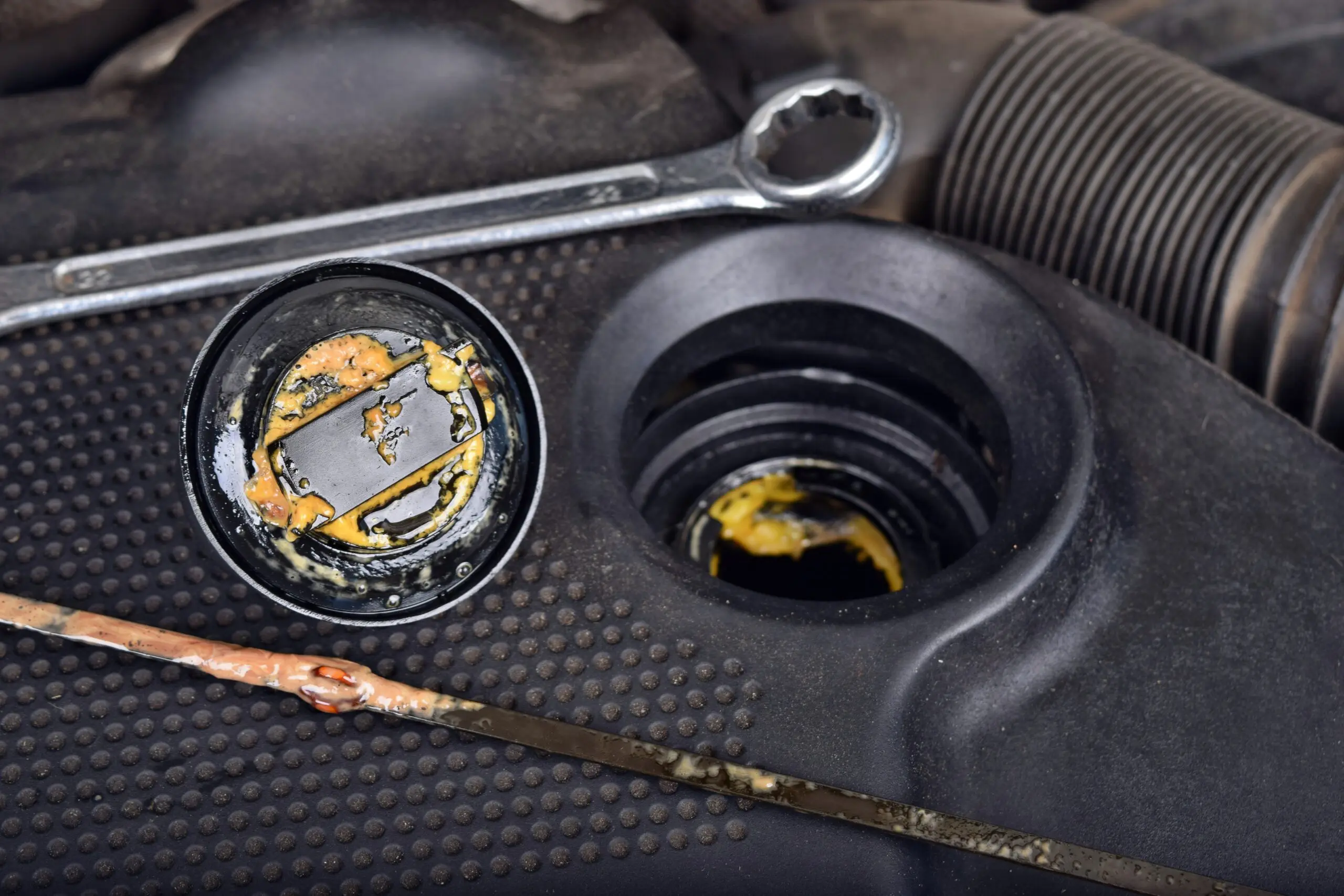What Causes a Head Gasket to Blow (and How to Prevent It)
Your vehicle’s engine is a finely tuned machine, and every small bit plays a role in its functionality. A car’s engine relies on the head gasket to maintain proper sealing between the cylinder head and the engine block, ensuring reliable operation. One of its most critical, although small and often overlooked, components is the head gasket. This vital seal plays a crucial role in ensuring your engine runs smoothly. When it fails, or you experience what’s known as a “blown head gasket,” the results can be catastrophic and costly.
Understanding the causes of head gasket failure, recognizing the warning signs, and taking preventive measures can help you avoid major engine damage and extend the life of your car. Recognizing a blown head gasket early is essential to prevent further damage to your car’s engine and avoid expensive repairs. Let’s take a closer look.
These issues can affect all types of cars, from daily drivers to high-performance vehicles, making it essential for every car owner and automotive enthusiast to be aware of head gasket problems.
What Is a Head Gasket & Why Does It Matter
What the Head Gasket Does
The head gasket is a seal that sits between the engine block and the cylinder head. Its job is to contain the internal combustion process, maintain compression, and prevent coolant and engine oil from leaking into the cylinders. Without it, your engine wouldn’t be able to function efficiently, or even at all, as the head gasket keeps engine coolant and oil from mixing.
What Happens When a Head Gasket Fails?
When a head gasket blows, exhaust gases can escape into the cooling system, disrupting this balance. Head gasket leaks may allow coolant to enter adjacent cylinders, and combustion gases may leak; coolant can seep into the oil system, and the engine could overheat. In the worst cases, head gasket leaks can cause loss of compression between adjacent cylinders, leading to total engine failure and turning a relatively minor issue into a major engine block repair or complete engine replacement.
Top Causes of Head Gasket Failure
Engine Overheating
The most common cause of a blown head gasket is engine overheating. Monitoring coolant levels is crucial to prevent the engine from overheating, which can cause severe damage. Excessive heat, especially when the engine is running at high temperatures, can cause the cylinder head to warp, creating gaps that prevent the gasket from sealing effectively. Overheating not only stresses the head gasket but also other engine components, compounding the problem.
Poor Cooling System Maintenance
Your cooling system is your engine’s first line of defense, and poor maintenance can lead to coolant loss. When parts like the radiator, water pump, or thermostat fail, or if coolant levels drop too low, it can lead to high temperatures and increased stress on the head gasket—be sure to check for external leaks around the engine as part of your cooling system maintenance.
Age and Wear
Like any part of your vehicle, head gaskets wear out over time. The materials used to create them degrade with repeated heating and cooling cycles, making them more prone to failure as the vehicle ages. However, regular maintenance can help extend the life of the head gasket by allowing early detection of issues and ensuring optimal engine conditions.
Incorrect Installation or Torqueing
Improper installation, particularly incorrect torqueing of the head bolts, can lead to uneven pressure on the head gasket. This not only shortens the lifespan of the part but also significantly increases the likelihood of premature failure. That’s why it’s essential to rely on experienced, ASE-certified technicians or a professional mechanic for any head gasket installation.
Pre-Ignition or Detonation
Abnormal combustion events, such as pre-ignition or detonation, create sudden pressure spikes within the combustion chamber by causing excessive cylinder pressure. These events can cause a head gasket to blow out, especially if the engine is already under stress or has pre-existing wear.
Symptoms of a Blown Head Gasket
A blown head gasket doesn’t always announce itself loudly, but it does leave clues. Watch for these common signs:
White Smoke from Exhaust
If you notice thick, white smoke coming from your exhaust pipe, it could be a sign of coolant leaking into the combustion chamber and burning off. This white smoke may also have a sweet smell, a classic sign of a head gasket leak, indicating that engine coolant is burning.
Milky Oil or Sludge
When coolant mixes with engine oil, it creates a milky, light-brown sludge that can be seen on the dipstick or under the oil cap; oil leaks around the engine may also indicate a blown head gasket. This cross-contamination is a clear indicator of head gasket failure.
Overheating Engine
Repeated or unexplained engine overheating may suggest a compromised head gasket. A damaged seal may prevent the cooling system from functioning correctly, creating a feedback loop that exacerbates the problem. Ignoring overheating can eventually lead to costly repairs.
Bubbles in the Radiator or Coolant Reservoir
If combustion gases are escaping into the cooling system, you may notice bubbling in the radiator or coolant reservoir, or see bubbles under the radiator cap when it is removed from a cooled engine. This is often due to air entering the system through a blown gasket, and leaks in the cooling system can also cause bubbling.
Loss of Engine Power or Rough Idle
A blown head gasket can cause the engine to misfire, leading to a significant drop in acceleration or power, which is a key symptom, as well as a rough idle. This occurs when compression is lost in one or more cylinders, resulting in poor engine performance. Continued operation in this condition can lead to severe engine damage.
How to Prevent Head Gasket Failure
While some causes of gasket failure are due to age or manufacturing flaws, many can be avoided with proper care and maintenance. If head gasket issues are left unchecked, they can cause further damage to your engine and lead to costly repairs.
Maintain Your Cooling System
One of the best ways to prevent overheating and, by extension, head gasket failure is to keep your cooling system in top shape. Regular coolant flushes, level checks, radiator inspections, and inspecting for coolant leaks go a long way in maintaining vehicle health. Telle Tire offers professional maintenance services to help you stay ahead of issues.
Don’t Ignore Overheating
If your temperature gauge spikes or you see steam from under the hood, pull over immediately. Continuing to drive with an overheating engine can cause severe damage to the head gasket and potentially lead to more extensive issues. Ignoring overheating may result in a blown head gasket, which can cause serious engine problems.
Schedule Regular Engine Inspections
During routine diagnostics, it’s essential to inspect for visible leaks, as they can indicate problems such as coolant or oil leaks. Routine diagnostics can catch early signs of engine trouble before they escalate. Schedule a computer diagnostic with Telle Tire to identify potential issues and keep your engine running smoothly.
Use Quality Parts and Service
Not all repairs are created equal. Trust your vehicle only to certified technicians who use high-quality, manufacturer-approved parts. Telle Tire’s ASE-certified team ensures repairs are done right the first time, saving you time and money in the long run. If you suspect a blown head gasket, seek professional help immediately to prevent further engine damage and ensure the safety of your vehicle.
Get Expert Head Gasket Diagnosis and Repair at Telle Tire
Think you might be dealing with a blown head gasket? Don’t wait until it becomes a costly engine replacement—repairs can cost several thousand dollars if not addressed promptly. Diagnosing engine problems early can help you avoid high repair costs. It’s time to take it to Telle. The certified experts at Telle Tire are here to help you identify the problem and provide dependable repair solutions.
Visit your nearest Telle Tire location or schedule your service appointment online today.


